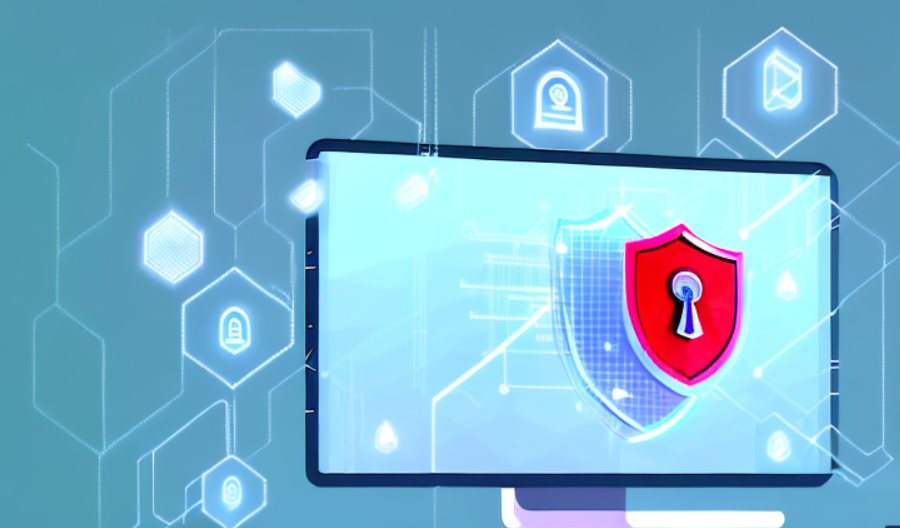Strategies for Successful Cyber Security Recruitment
19 Jun, 20235
Contents
- Understanding the Cybersecurity Talent Landscape
- Identifying Key Skills and Competencies
- Analysing the Demand for Cybersecurity Professionals
- Recognising the Challenges in Cybersecurity Recruitment
- Building an Attractive Employer Brand
- Showcasing Company Culture and Values
- Highlighting Growth Opportunities and Benefits
- Leveraging Employee Testimonials and Success Stories
- Developing a Comprehensive Recruitment Strategy
- Utilising Multiple Recruitment Channels
- Implementing a Strong Screening Process
- Collaborating with Educational Institutions and Industry Partners
- Fostering an Inclusive and Diverse Workforce
- Promoting Diversity and Inclusion Initiatives
- Addressing Unconscious Bias in the Recruitment Process
- Offering Mentorship and Support Programs for Underrepresented Groups
Strategies for Successful Cybersecurity Recruitment
In today's ever-changing digital landscape, cybersecurity is becoming increasingly important for businesses and organisations worldwide. As more and more companies seek to hire cybersecurity professionals to protect their valuable data and systems, the competition for top talent is fiercer than ever. In this article, we'll explore some strategies for successful cybersecurity recruitment that can help your organisation attract, hire, and retain the best cybersecurity professionals.
Understanding the Cybersecurity Talent Landscape
Before embarking on any recruitment efforts, it's important to have a clear understanding of the current cybersecurity talent landscape. This includes identifying the key skills and competencies that are in high demand, analysing the current supply of cybersecurity professionals, and recognising the challenges that are associated with cybersecurity recruitment.
Identifying Key Skills and Competencies
The skills and competencies required for a successful career in cybersecurity are constantly evolving. As technology advances and new threats emerge, cybersecurity professionals need to be able to adapt quickly and stay up-to-date with the latest technologies and industry trends.
One of the key skills that is in high demand in the cybersecurity industry is a strong knowledge of network security protocols and technologies. This includes understanding how to design and implement secure networks, as well as how to detect and respond to network security threats.
Another important skill is expertise in vulnerability management and threat intelligence. Cybersecurity professionals need to be able to identify vulnerabilities in systems and applications, and develop strategies to mitigate those vulnerabilities before they can be exploited by attackers. They also need to be able to analyse threat intelligence data and use it to proactively identify potential threats.
Experience with cloud security and mobile security is also becoming increasingly important, as more organisations adopt cloud-based technologies and employees use mobile devices to access corporate data. Cybersecurity professionals need to be able to design and implement secure cloud and mobile solutions, as well as develop policies and procedures for securing these technologies.
Strong communication and problem-solving skills are also essential for success in the cybersecurity industry. Cybersecurity professionals need to be able to communicate complex technical concepts to non-technical stakeholders, and work collaboratively with other IT and business teams to develop and implement security solutions.
Analysing the Demand for Cybersecurity Professionals
The demand for cybersecurity professionals has been steadily growing over the past few years, with no signs of slowing down. According to a recent report by Cybersecurity Ventures, there will be 3.5 million unfilled cybersecurity jobs by 2021, up from one million in 2014. This means that there is a significant shortage of qualified cybersecurity professionals, which can make recruitment efforts more challenging.
One of the reasons for the high demand for cybersecurity professionals is the increasing frequency and severity of cyber attacks. As more organisations become targets of cyber attacks, they need to invest in cybersecurity to protect their data and systems. In addition, the increasing adoption of cloud-based technologies and mobile devices has created new security challenges that require specialised skills and expertise.
Recognising the Challenges in Cybersecurity Recruitment
One of the biggest challenges in cybersecurity recruitment is the competition for top talent. Because there are relatively few qualified candidates available, many organisations find themselves competing for the same pool of candidates. This can make it difficult to attract and retain top talent, and can result in higher salaries and benefits packages.
In addition, the rapidly changing nature of the cybersecurity industry means that it can be difficult to find candidates who possess the necessary skills and experience. Cybersecurity professionals need to be able to stay up-to-date with the latest technologies and industry trends, and organisations need to be able to identify candidates who have the skills and experience needed to meet their specific security needs.
Another challenge is the need for diversity in the cybersecurity workforce. Women and minorities are underrepresented in the cybersecurity industry, which can limit the pool of available candidates and lead to a lack of diversity in ideas and perspectives.
Overall, understanding the cybersecurity talent landscape is crucial for organisations looking to recruit and retain top cybesecurity talent. By identifying the key skills and competencies in high demand, analysing the current supply of cybersecurity professionals, and recognising the challenges associated with cybersecurity recruitment, organisations can develop strategies to attract and retain top talent in this rapidly growing field.
Building an Attractive Employer Brand
In order to attract top cybersecurity talent, it's important to build an attractive employer brand that showcases your organisation's values, culture, and growth opportunities. This can help your organisation stand out from the competition and attract the attention of highly qualified candidates.
Showcasing Company Culture and Values
One way to build an attractive employer brand is to showcase your organisation's culture and values. This can include highlighting the ways in which your organisation supports diversity and inclusion, as well as the company's commitment to ethical and responsible business practices.
For example, you can showcase your organisation's commitment to diversity by highlighting the various initiatives that you have in place to promote diversity and inclusion. This can include employee resource groups, mentorship programs, and training sessions that focus on cultural awareness and sensitivity. By highlighting these initiatives, you can demonstrate to potential candidates that your organization is committed to creating a welcoming and inclusive workplace.
You can also showcase your organisation's commitment to ethical and responsible business practices by highlighting the ways in which your organisation gives back to the community. This can include charitable donations, volunteer work, and partnerships with local organisations. By demonstrating your organisation's commitment to social responsibility, you can appeal to candidates who are looking for an employer that shares their values.
Highlighting Growth Opportunities and Benefits
Another way to build an attractive employer brand is to highlight the growth opportunities and benefits that your organisation offers. This can include professional development opportunities, competitive salaries and benefits, and a flexible and supportive work environment.
For example, you can showcase your organisation's commitment to professional development by highlighting the various training and certification programs that you offer. This can include opportunities for employees to attend industry conferences, enroll in online courses, or participate in mentorship programs. By highlighting these opportunities, you can demonstrate to potential candidates that your organisation is committed to investing in the growth and development of its employees.
You can also highlight the competitive salaries and benefits that your organisation offers. This can include health insurance, retirement plans, and paid time off. By offering competitive compensation packages, you can attract top talent and demonstrate your organisation's commitment to employee well-being.
Leveraging Employee Testimonials and Success Stories
Finally, leveraging employee testimonials and success stories can be an effective way to build an attractive employer brand. This can demonstrate the ways in which your organisation has helped employees advance their careers, and showcase the positive impact that your organisation has had on the wider community.
For example, you can feature employee testimonials on your organisation's website or social media channels. These testimonials can highlight the ways in which your organisation has helped employees grow and develop professionally, and demonstrate the positive impact that your organisation has had on their lives. By showcasing these success stories, you can demonstrate to potential candidates that your organisation is a great place to work and has a positive impact on its employees and the wider community.
Developing a Comprehensive Recruitment Strategy
Once you have a clear understanding of the cybersecurity talent landscape and have built an attractive employer brand, it's time to develop a comprehensive recruitment strategy that can help you find and hire the best candidates for your organisation.
Utilising Multiple Recruitment Channels
One key element of a successful recruitment strategy is to utilise multiple recruitment channels. This can include job postings on industry-specific job boards, social media recruitment campaigns, and networking events with industry professionals.
Industry-specific job boards can be a great way to reach a large pool of qualified candidates. By posting your job openings on these boards, you can ensure that your job ads are seen by individuals who are actively looking for cybersecurity positions.
Social media recruitment campaigns can also be effective in attracting top talent. By leveraging social media platforms like LinkedIn and Twitter, you can promote your job openings to a wider audience and engage with potential candidates.
Networking events with industry professionals can provide an opportunity to meet and connect with potential candidates face-to-face. This can be especially valuable for building relationships with passive candidates who may not be actively looking for a new job.
Implementing a Strong Screening Process
Another important element of a successful recruitment strategy is to implement a strong screening process that can help you identify the most promising candidates. This can include pre-employment assessments, structured interviews, and reference checks.
Pre-employment assessments can provide valuable insights into a candidate's skills, knowledge, and personality traits. By administering assessments that are specific to cybersecurity roles, you can ensure that you are identifying candidates who have the technical and problem-solving skills required for the job.
Structured interviews can also be an effective way to evaluate candidates. By asking a set of standardised questions, you can ensure that you are evaluating each candidate on the same criteria. This can help you make more objective hiring decisions and avoid biases.
Reference checks can provide valuable information about a candidate's past performance and work habits. By contacting the candidate's previous employers and colleagues, you can gain insights into their strengths and weaknesses and assess their fit for the role.
Collaborating with Educational Institutions and Industry Partners
Finally, collaborating with educational institutions and industry partners can be an effective way to identify and attract promising candidates. This can include partnering with universities and colleges to offer internships and co-op placements, as well as developing relationships with industry associations and professional organisations.
Internships and co-op placements can provide students with valuable hands-on experience in the field of cybersecurity. By offering these opportunities, you can identify top talent early on and potentially hire them after they graduate.
Developing relationships with industry associations and professional organisations can also be valuable. By attending events and conferences hosted by these organisations, you can connect with potential candidates and learn about the latest trends and developments in the field of cybersecurity.
In summary, developing a comprehensive recruitment strategy is essential for finding and hiring the best cybersecurity talent. By utilising multiple recruitment channels, implementing a strong screening process, and collaborating with educational institutions and industry partners, you can ensure that you are identifying and attracting top candidates to your organisation.
Fostering an Inclusive and Diverse Workforce
Finally, it's important to foster an inclusive and diverse workforce in order to attract and retain the best cybersecurity talent. This can help ensure that your organisation is able to access a wider pool of qualified candidates and create a more innovative and effective team.
Promoting Diversity and Inclusion Initiatives
One way to foster an inclusive and diverse workforce is to promote diversity and inclusion initiatives within your organisation. This can include implementing policies and practices that support equal opportunities for all employees, and actively seeking out candidates from underrepresented groups.
Addressing Unconscious Bias in the Recruitment Process
Another way to foster an inclusive and diverse workforce is to address unconscious bias in the recruitment process. This can include providing training to hiring managers on how to avoid bias in job postings, interviews, and evaluations.
Offering Mentorship and Support Programs for Underrepresented Groups
Finally, offering mentorship and support programs for underrepresented groups can be an effective way to foster an inclusive and diverse workforce. This can include pairing new hires with experienced mentors, as well as offering training and development programs that are specifically designed for employees from underrepresented groups.
If you want to learn more about how your organisation can successfully attract and retain the best cybersecurity talent in the industry, please get in touch.



